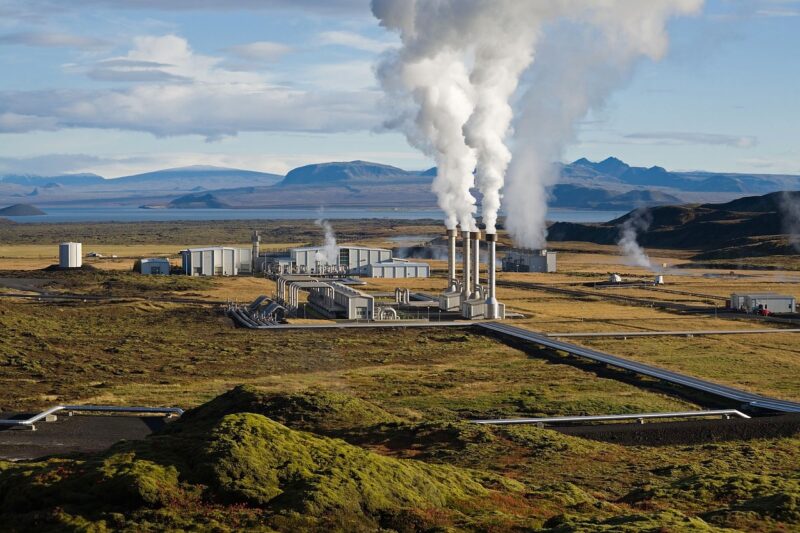How Geothermal Energy Is Harnessed from the Earth
November 16, 2024

Geothermal energy, derived from the Earth’s internal heat, has been utilized by humanity for thousands of years. Its applications range from electricity generation to direct heating in residential and agricultural settings. As the world shifts towards more sustainable energy sources to combat climate change and reduce fossil fuel reliance, geothermal energy presents many advantages, including being renewable, sustainable, and reliable. This comprehensive guide will take you through the intricacies of how geothermal energy is harnessed, its benefits, challenges, and future prospects.
1. Understanding Geothermal Energy
Geothermal energy originates from the heat stored within the Earth. It results from several sources, including:
- Residual heat: The heat generated from the formation of the planet during its inception and from the decay of radioactive elements within the Earth.
- Heat from the Earth’s mantle: The Earth’s mantle continuously generates heat due to residual heat from the planet’s formation, radioactive decay, and other geological processes.
- Geothermal gradients: The temperature of the Earth increases with depth. This gradient varies by location and can exceed 25°C (approximately 45°F) per kilometer in certain areas.
Geothermal energy can be harnessed in various ways depending on its temperature range, resulting in different methods for energy extraction.
2. Types of Geothermal Resources
Geothermal resources can be classified into three primary categories, depending on the temperature and specific use of the energy:
- Low-Temperature Resources (below 90°C or 194°F):
- Used for direct applications such as heating buildings, drying crops, and aquaculture.
- Geothermal heat pumps (GHPs) are popular technologies utilizing low-temperature geothermal energy for space heating and cooling.
- Medium-Temperature Resources (90°C to 150°C or 194°F to 302°F):
- Appropriate for district heating, greenhouse heating, and some industrial processes.
- High-Temperature Resources (above 150°C or 302°F):
- Primarily used for electricity generation through geothermal power plants.
- Common in geothermal fields located near tectonic plate boundaries and volcanic activity.
3. Methods of Harnessing Geothermal Energy
The two main approaches to harnessing geothermal energy are through geothermal power plants and direct-use applications. Here’s how each method works:
3.1 Geothermal Power Plants
Geothermal power plants generate electricity by converting geothermal energy into steam, which drives turbines connected to generators. There are three main types of geothermal power plants:
- Dry Steam Plants:
- Use steam extracted directly from geothermal reservoirs to turn turbines.
- Less common due to limited reservoir availability.
- Flash Steam Plants:
- Extract high-pressure hot water from wells, allowing it to ‘flash’ into steam as pressure decreases.
- Steam is then used to drive a turbine.
- Binary Cycle Power Plants:
- Use heat exchangers to indirectly convert geothermal heat into steam that drives the turbine.
- Allow for the use of lower-temperature geothermal resources.
3.2 Direct-Use Applications
Direct-use applications harness geothermal energy for heating and cooling without converting it into electricity. Examples include:
- Geothermal Heat Pumps (GHPs): These systems utilize the Earth’s stable underground temperature to heat and cool buildings efficiently.
- Agricultural Use: Geothermal heating can accelerate greenhouse plant growth, enabling year-round production in colder climates.
- Industrial Processes: Many industries utilize geothermal heat for processes like pasteurization, drying, and food processing.
4. The Benefits of Geothermal Energy
Geothermal energy offers several advantages:
- Renewable and Sustainable: Geothermal energy is abundant and won’t run out, unlike fossil fuels.
- Low Carbon Emissions: It produces minimal greenhouse gas emissions compared to fossil fuels, aiding climate change mitigation efforts.
- Base Load Power Supply: Geothermal plants can generate a consistent output of electricity, providing reliability for grids.
- Land Use Efficiency: Geothermal power plants require less land compared to solar and wind farms while generating a comparable amount of energy.
5. Challenges and Limitations
Despite its advantages, geothermal energy faces certain challenges:
- Location Dependency: Geothermal energy is most effective in specific regions with sufficient geothermal activity, limiting its availability.
- High Initial Costs: The need for well drilling, exploration, and power plant construction can be expensive, making it a significant upfront investment.
- Potential for Misinformation: Concerns over environmental impacts, such as land subsidence and induced seismicity, can create misconceptions regarding geothermal energy safety and effectiveness.
6. Future Prospects for Geothermal Energy
As technology evolves, the future of geothermal energy looks promising. Key advancements may include:
- Enhanced Geothermal Systems (EGS): This technology involves creating artificial reservoirs by injecting water into hot rock formations, expanding the potential for geothermal energy generation in non-traditional areas.
- Improved Drilling Techniques: Innovations in drilling can reduce costs significantly, making geothermal energy more accessible and feasible.
- Integration with other Renewable Sources: Combining geothermal energy with other renewable sources, such as wind and solar, provides a more stable and continuous energy supply.
Conclusion
Geothermal energy has immense potential as a sustainable and renewable resource. Understanding how it’s harnessed, its benefits, and the challenges it faces will guide its development as the world seeks green energy solutions. By investing in technology, research, and infrastructure, geothermal energy could significantly contribute to global energy needs and the transition to clean energy. As we strive for a sustainable future, harnessing the Earth’s heat will play a vital role in reducing our carbon footprint and achieving energy independence.
Throughout the world, as we pioneer innovative solutions and technologies, geothermal energy will likely form an essential part of our low-carbon energy landscape for generations to come.








